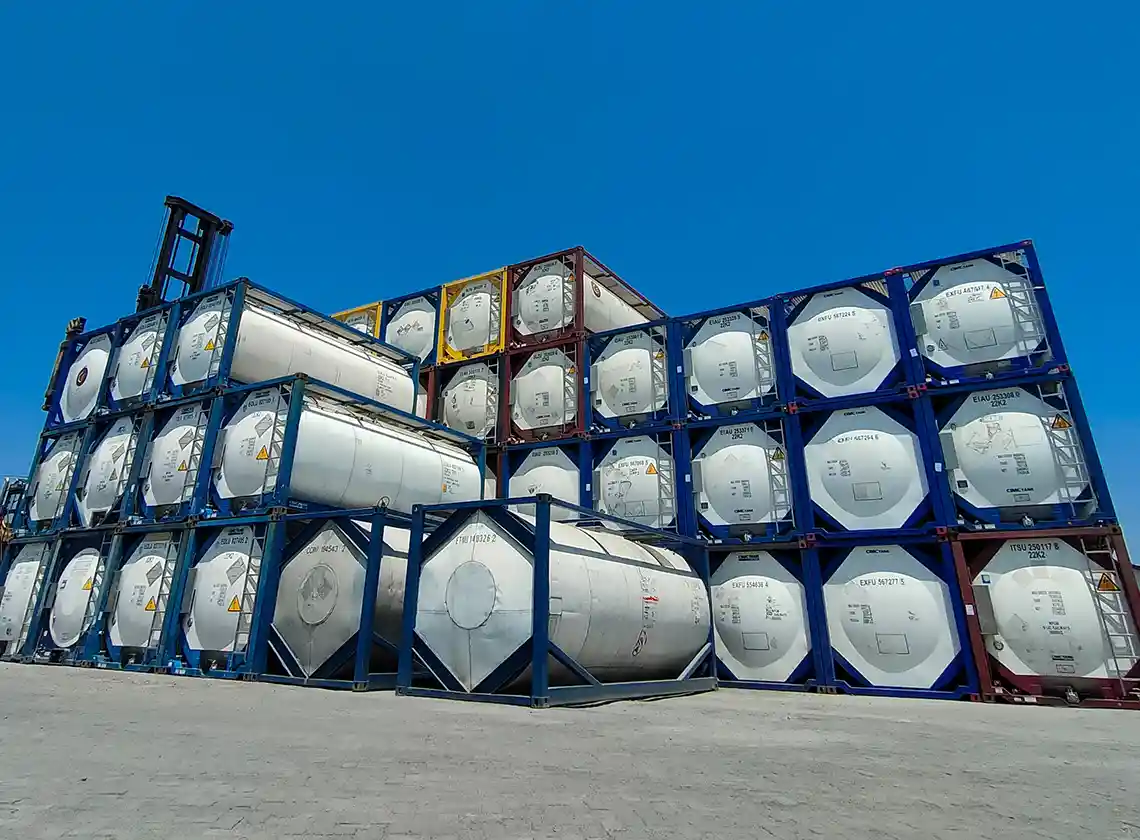 +1 289 719 0290
+1 289 719 0290- Progressive Cargo Inc-855 Matheson Blvd East, Unit 1B, Mississauga, ON, L4W 4L6

When we talk about moving thousands of liters of sensitive liquids across continents, there’s one thing that matters more than speed or cost: control. At Progressive Cargo, as a flexitank transport company, we have learned that the real difference between a smooth shipment and a disastrous one lies in how well you can monitor every stage of the journey. Flexitanks are efficient, no doubt, but efficiency without visibility is a gamble. That’s where advanced monitoring systems come into play.
Liquid cargo doesn’t behave like solids. It reacts. A change in temperature can make edible oils solidify, a slight delay in customs can spoil fruit juices, and a tiny puncture can cause leaks that damage not just the cargo, but also the container. Imagine sending 24,000 liters of wine across two oceans without any clue of what’s happening inside the container. That’s not a risk any brand wants to take.
Monitoring systems fill this gap. They provide constant insights—whether the liquid is safe, the flexitank is stable, or the route is clear. For us at Progressive Cargo, it’s not just about transporting—it’s about giving clients the peace of mind that their shipment is being watched, every minute of every day.
Temperature loggers are indispensable. They sit quietly inside the container, recording conditions every few seconds. If orange juice warms up beyond a set range, an alert goes out instantly. For clients dealing with beverages or chemicals, that alert can mean the difference between a usable shipment and a total loss.
Flexitanks hold massive volumes, often filling up the entire space of a container. The liquid shifts as trucks turn, ships roll, or cranes lift. Pressure sensors keep track of stress on the tank, while load sensors balance out weight distribution. This prevents ruptures and ensures that the structural limits of the tank are never exceeded.
Clients no longer want vague updates like “on the way.” GPS tracking has changed that. With location pings every few minutes, clients know exactly where their cargo is—whether it’s approaching a port, stuck at a customs checkpoint, or just an hour from delivery. This level of transparency allows them to plan downstream logistics more efficiently.
Leaks can escalate quickly, especially when dealing with chemicals. Traditional inspections involved visual checks, which often came too late. Modern leak detection sensors catch micro-leaks long before they become visible. For Progressive Cargo, this isn’t just about protecting the shipment; it’s about protecting the environment and avoiding safety hazards.
Another feature clients value is accessibility. Through cloud dashboards, both our team and the client can access live reports anytime, anywhere. Whether a logistics manager is sitting in an office in Dubai or a supplier is monitoring from Singapore, everyone sees the same real-time data.
| Feature | Traditional Shipping | Advanced Monitoring with Flexitanks |
| Cargo Tracking | Manual updates | Live GPS with instant alerts |
| Temperature Control | Periodic checks | Continuous monitoring |
| Leak Detection | Visual inspection | Automated sensor detection |
| Pressure & Load Monitoring | None | Real-time sensor data |
| Risk Mitigation | Reactive | Proactive, data-driven |
Traditional shipping waits for problems to appear. Advanced monitoring prevents them from ever becoming problems.
As one of the leading flexi tank service providers, we’ve integrated monitoring at every step—loading, shipping, and unloading. For example, before a container leaves the port, our systems record baseline readings. Throughout the journey, data is transmitted and logged so our team and the client can access the same information in real time.
This isn’t just technology for its sake. It’s about accountability. Clients know we’re not just transporting cargo, we’re actively protecting it. For industries like food, beverage, and chemicals, that visibility builds trust.
Monitoring systems have shifted flexitank logistics from being reactive to predictive. At Progressive Cargo, our role as a flexitank transport company is not limited to delivering goods—it’s about delivering them safely, with transparency and accountability. For businesses relying on liquid bulk chemical transportation, advanced monitoring isn’t just an added value; it’s a lifeline. Data doesn’t just track shipments; it protects reputations and ensures peace of mind.
Also Read :
Seamless Cross-Border Trucking: What PIP & CTPAT-Certified Services Mean For You
Bulk Liquid Shipping – Cost-Saving Tips for Chemical Manufacturers
More Useful Links:-
Transportation Company | International Truck Company | Air Freight Services
Q1. What makes monitoring systems crucial in flexitank transport?
Monitoring systems provide real-time data on temperature, pressure, and location. This ensures cargo safety, early detection of risks like leaks or imbalances, and proactive measures that reduce costly losses during transit.
Q2. How does Progressive Cargo use GPS in flexitank shipments?
We integrate GPS tracking to give exact route updates and live delivery estimates. It helps clients stay informed, minimizes risks of delays or diversions, and offers transparency throughout the entire transport process.
Q3. Can monitoring prevent damage during liquid bulk shipping?
Yes. Sensors detect irregularities in temperature, load, or pressure early on. This allows timely corrective action, preventing product spoilage, tank stress, or contamination. Monitoring transforms the process from reactive to predictive.
Q4. Are leak detection systems standard in flexitank transport?
At Progressive Cargo, leak detection is standard practice. Sensors alert us immediately if even minor leaks occur, helping us act fast and safeguard both the cargo and surrounding environment from damage.